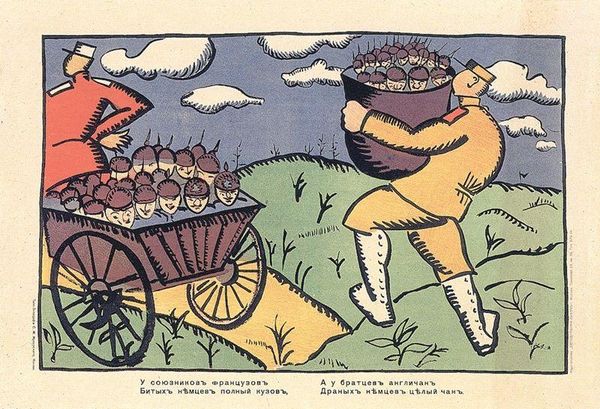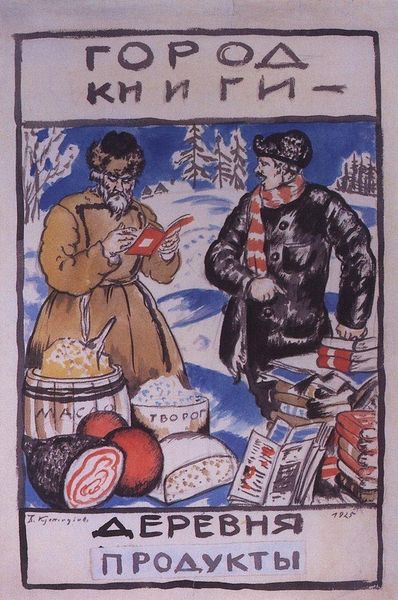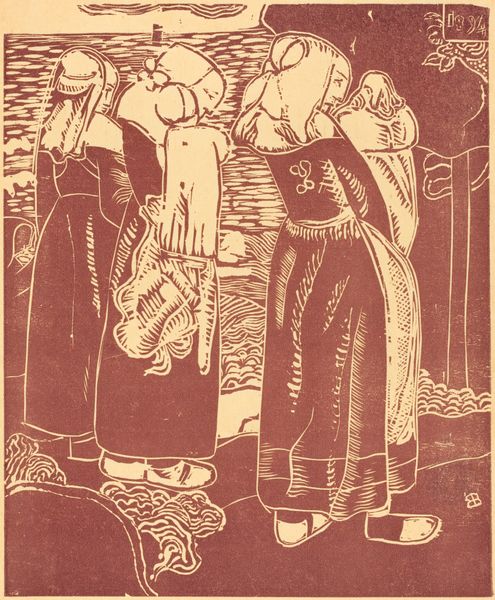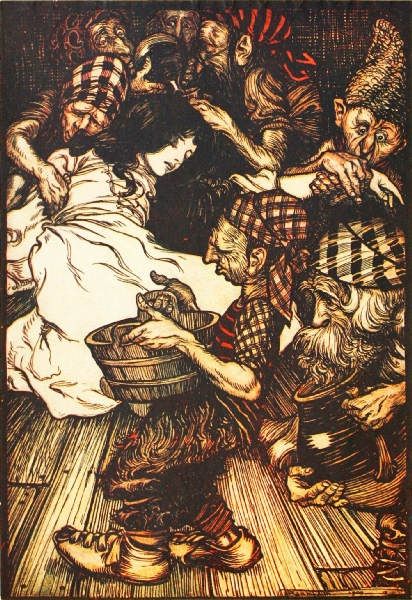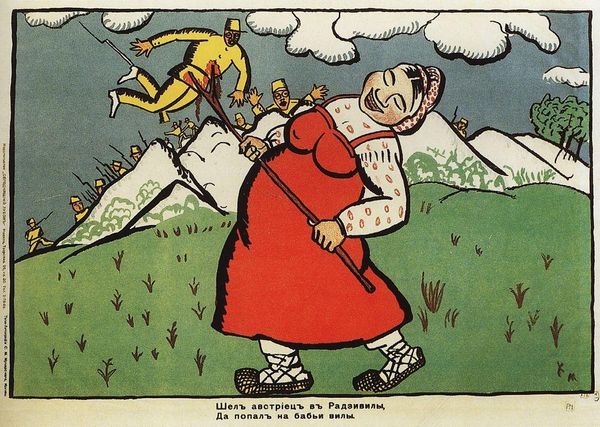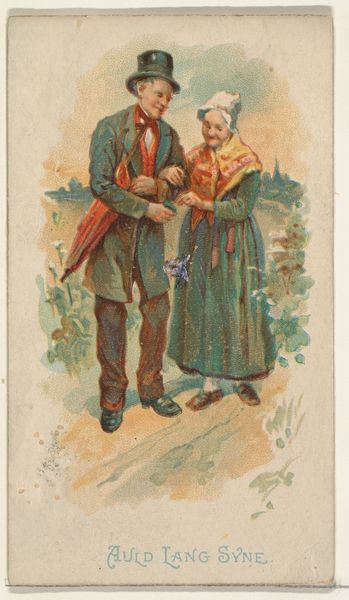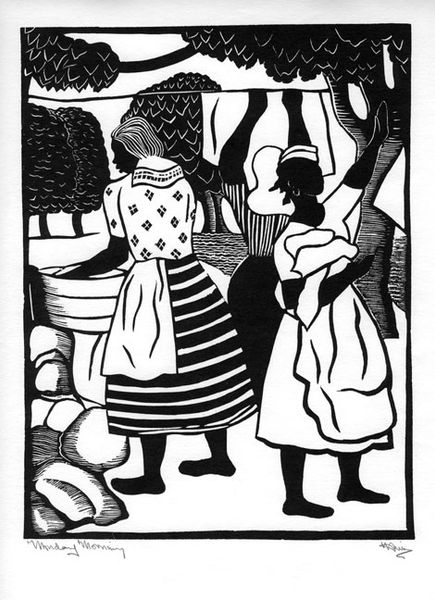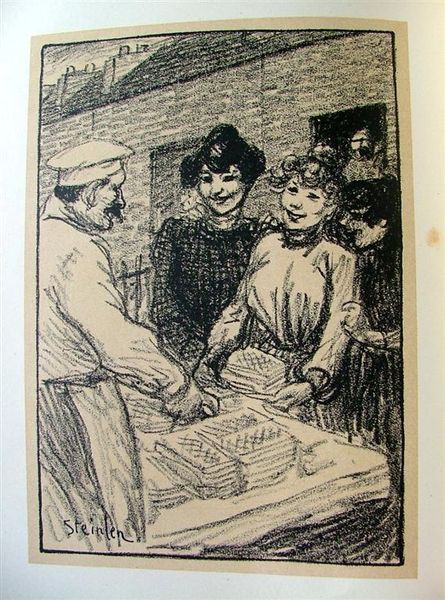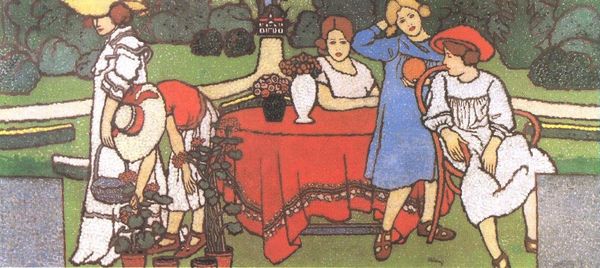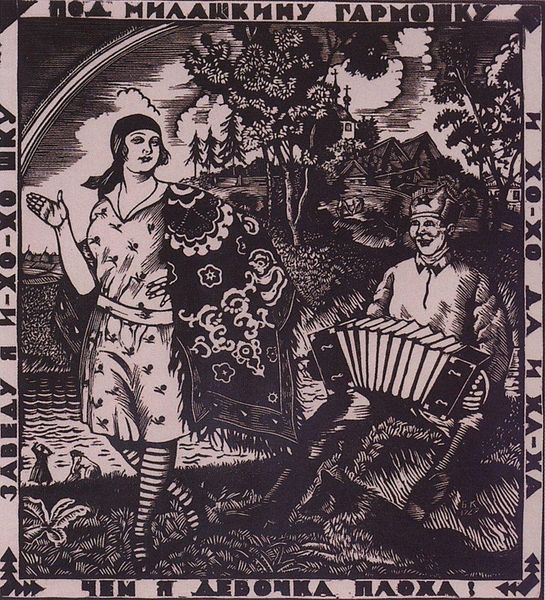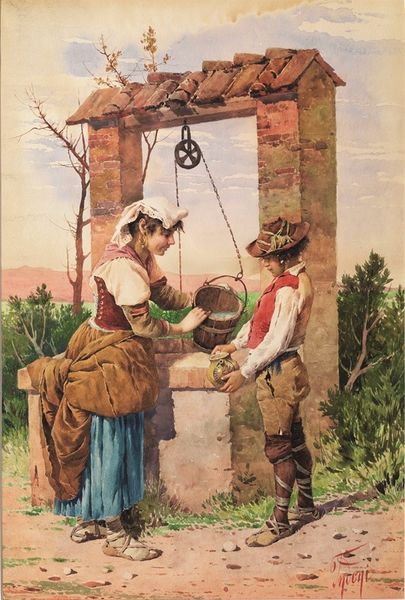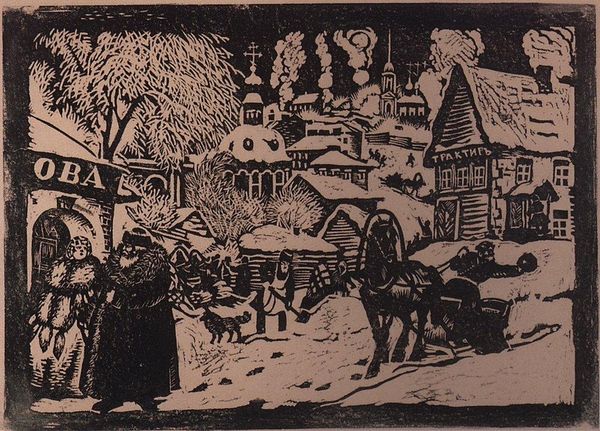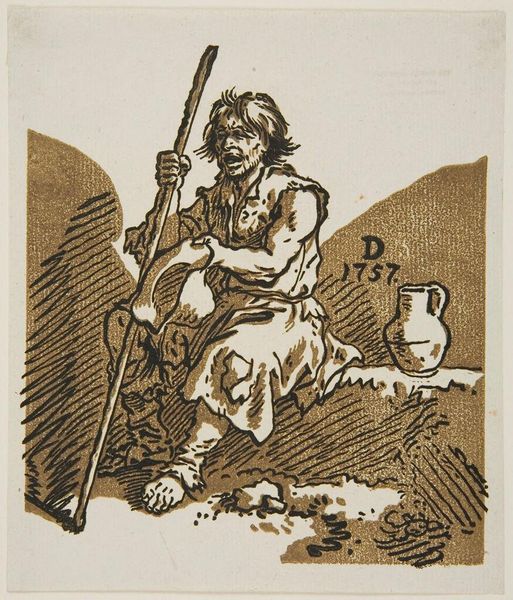
painting, watercolor, poster
#
art-deco
#
narrative-art
#
painting
#
pattern
#
watercolor
#
geometric
#
men
#
russian-avant-garde
#
cityscape
#
genre-painting
#
poster
#
realism
Copyright: Public domain
Editor: This is Boris Kustodiev's 1925 work, "Sketch of Poster City gives Textiles - a Village gives Bread", made with watercolor and other materials on paper. It feels very staged and deliberately propagandistic, especially with the juxtaposition of the figures and the bold lettering. What can you tell me about its social context? Curator: Indeed, it's hard to divorce this piece from its historical setting. Kustodiev created this in the early years of the Soviet Union, a period marked by massive social upheaval and efforts to reshape the very fabric of society through visual communication. Look at the figures - the idealized peasant woman offering bread and the worker offering textiles. How does the arrangement reinforce Soviet values? Editor: I see the contrast, but I'm curious. The piece isn't strictly realist; there's a kind of art-deco influence too. Is it common to mix art styles like that during that era? Curator: Exactly! The Russian avant-garde, while often abstract, sought to serve the revolution. Realism was valued for its accessibility to the masses. Kustodiev, in a way, straddles these worlds. His posters are attempts to elevate everyday life through art, and reflect the reciprocal support that the Soviet Union sought between industrial production and agriculture. Editor: I noticed the limited palette – is there any connection there with availability, or would it have been an aesthetic choice? Curator: Possibly both. Remember that materials were scarce in this period. The pragmatic reason for the use of accessible colors could easily intertwine with the visual language that the avant-garde created, often based on geometric forms in strong colors. These kinds of images had to work, appealing to everyone in society. Editor: That really makes sense. So, Kustodiev is speaking to a new socialist idea through accessible symbols, making his images incredibly important for solidifying support at the time. Curator: Precisely. Understanding the politics and social aims of that time lets us view these paintings less as static art objects and more as persuasive tools within the visual landscape of early Soviet history.
Comments
No comments
Be the first to comment and join the conversation on the ultimate creative platform.
